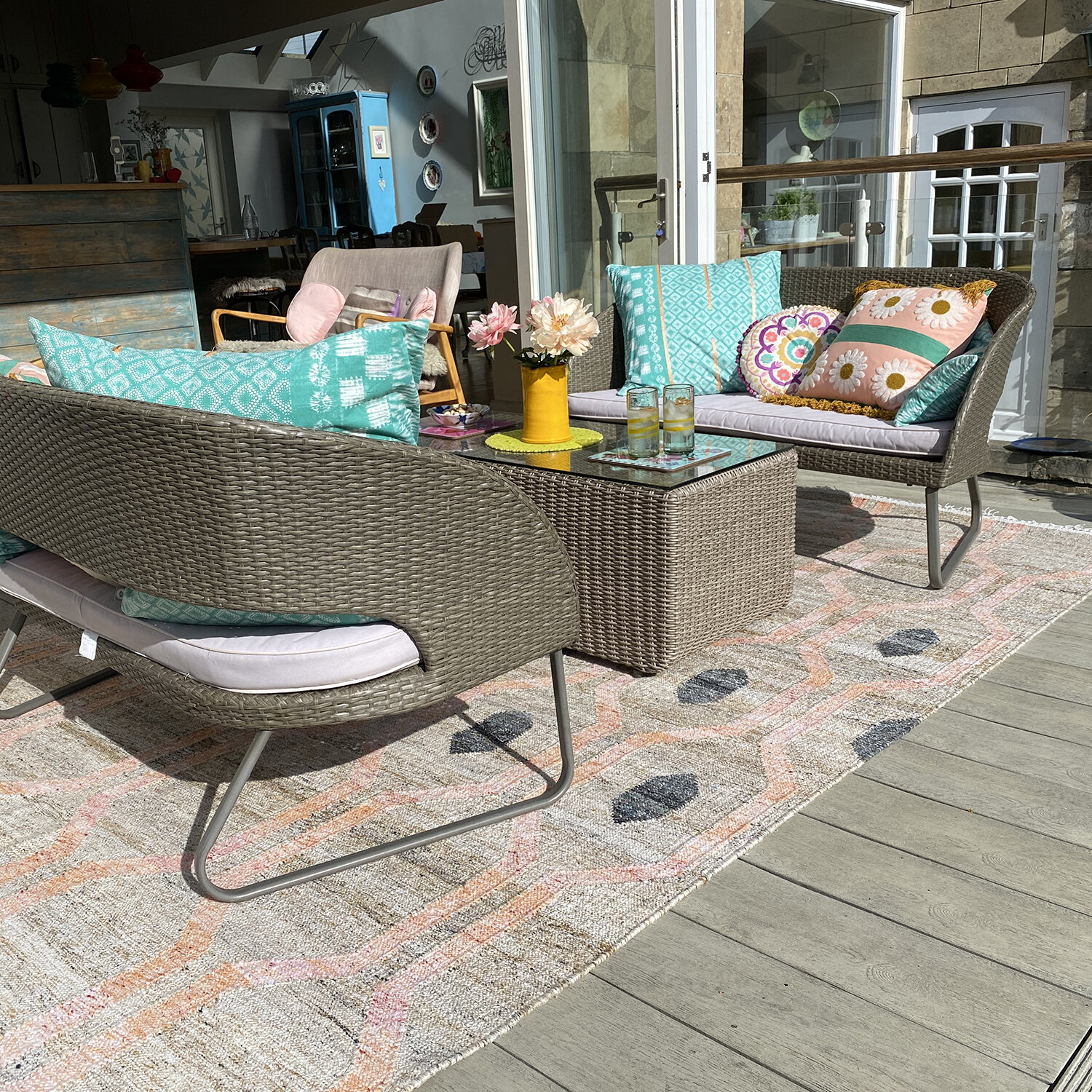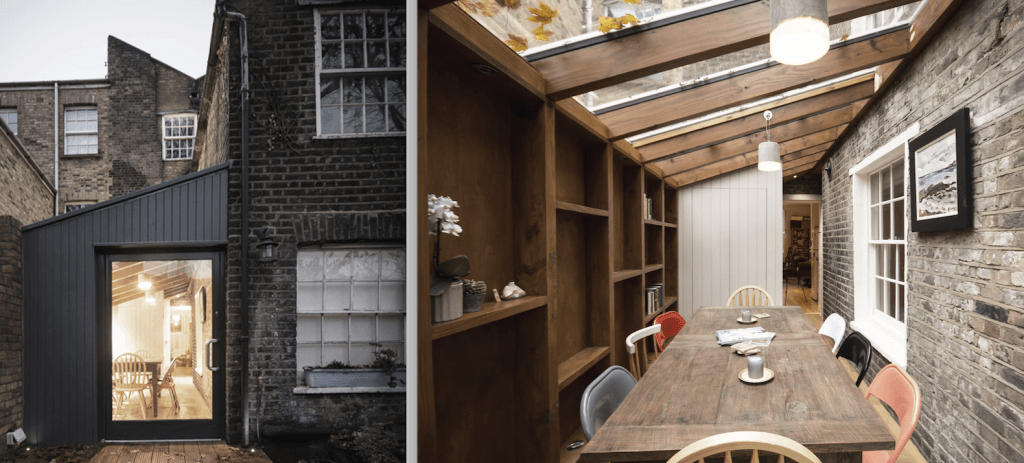5 easy ways to seamlessly link your indoor and outdoor spaces
Embrace the season by maximising natural light and decorating your home with colours and patterns that evoke joy.
Keep reading for some tips on seamlessly linking your indoor and outdoor areas. The trick is to view your garden or terrace as another room in your home, using your personality to create a space that is as cheerful as it is stunning.
Use colours and accessories to link inside and out
Using colour to link indoor and outdoor spaces of any size creates harmony. It’s as simple as lifting your colour choices from your sitting room or kitchen and dropping them into furniture, rugs and accessories on your decking, patio or summer house.
Consider painting a garden trellis or wooden table the same colour as the feature wall in your living room. Lick Paint offers sustainably made paints in all colours that work inside and outside.
Try my colour picks for April: Mazarine 256 by Little Greene and Sap green by Farrow and Ball are two of my favourites.
Accessories create cohesion, too, so try hanging a hammock that matches the patterns on your sofa or pairing outdoor solar lights with indoor lampshades. Painting hanging pots or hand-making macramé plant holders can add charm throughout.
2. Match the flooring
Flooring is a great tool to create continuity. When done right, your garden naturally becomes a ‘fifth room’, feeling more part of the home rather than separate and detached.
Use colour-blocking, decking and mixed textures to create garden ‘zones’, perfect for entertaining.
Create depth with outdoor rugs to soften the floor and create a cosy space.
Add solar lamps and a chiminea for ambience and warmth on cooler evenings.
Elevating dining areas onto decking will add another level to the garden, making the area feel like a new room.
Maximise seating space with a pergola. This creates a kind of separate, exclusive area that not only looks inviting but protects guests from Spring showers, too.
Outdoor Solar floor light, Conran £824
3. The power of bi-folding doors
The beauty of bi-folding doors is that they’re multifunctional. They remove the threshold between inside and outside by flooding rooms with natural light and circulating fresh air around the house. In winter, you can keep the doors closed but still enjoy the cleansing feeling of natural light filling the home.
Narrow-framed bi-folds are more elegant and so create an illusion of a larger space. Match the colour of the frame to those in the house and use coated aluminium for longer wear.
High-gloss paints are best for outside doors, trims and window frames because they’re a lot easier to clean.
4. Create focal points with garden features
Bright artwork or sculptures bring character to spaces. Use work from the same artists inside and outside to maintain the style.
Mirrors also make a space feel bigger by bouncing light into shaded sections of the garden. Hang them at eye-level, like you would in your hallway, so that the space doesn’t feel disjointed.
5. Glass side returns
Side returns are mostly found along the side or back of period properties or semi-detached houses. They are small extensions often built into an alleyway, turning an unused, dark area into a bright, open and welcoming spot.
Glass side returns may be compact, but they maximise natural light and create a focal point in the garden. Small extensions can go a long way — especially in smaller houses. Adding any glass through windows, doors, and conservatories will automatically make the space seem larger and lighter.
Side return, designed by Design for me
If you’re planning an interior design project or want to learn how to use colour in your home, sign up for an Interior colour workshop and use colour with confidence.








